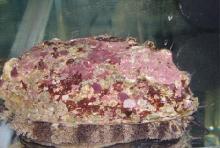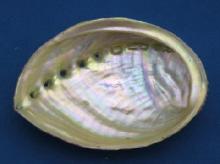Materials made by firing clay, like pottery or brick, are called ceramics. Ceramics are used broadly in common consumer products like tableware, tiles, heaters and other heating elements, but they are also an indispensable component in advanced technologies like space development and computers. Ceramics are light, hard, and heat-resistant, but they are also brittle, which is their greatest weakness. Abalone shell is also made of ceramic material, but it would never break from simply being dropped. It’s even tough enough to withstand being beaten with a hammer. Abalone shell is a laminate structure composed of thin ceramic sheets less than a micron (1/1000mm) thick that are glued together with a flexible adhesive. More than 1000 of these microscopic sheets are stacked in a single millimeter. Even if the shell is cracked, it is unlikely that the crack will spread both because the glue holding the layers together is extremely flexible, and because any crack must break through each of the microscopic sheets individually, which makes the shell as a whole much more difficult to shatter.
- Efficiency(Energy Saving, Resource Saving, Light):
- High intensity
- Defense/Stability:
- Resistance to outside threats
The individual sheets inside man-made laminate material are normally at least a few dozen microns at the thinnest, but recently a new method has been attempted which applies various technologies to produce nanolaminate material. Nanolaminate material contains stacked sheets of comparable thickness to those in an abalone shell. Additionally, research is being conducted to investigate how to make thin ceramic sheets the same way they are made in shells. This research has attracted much attention as it could lead to a method of producing ceramics at room temperature and normal pressure, instead of the traditional way of firing them under increased pressure and high temperatures. If the secret behind shatterproof abalone shells could be incorporated into many different kinds of ceramics, ceramics could be more heavily relied upon without fear of breakage. Furthermore, if the metal materials in cars and rockets could be replaced with these ceramics, more lightweight machines could be produced.




















